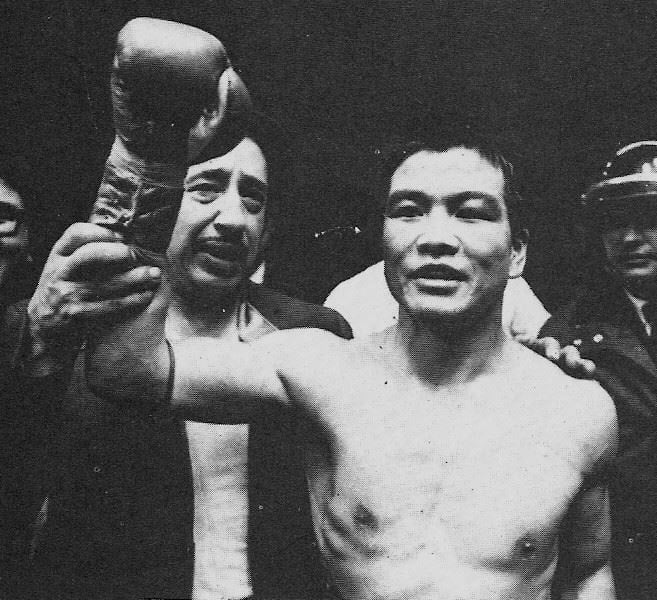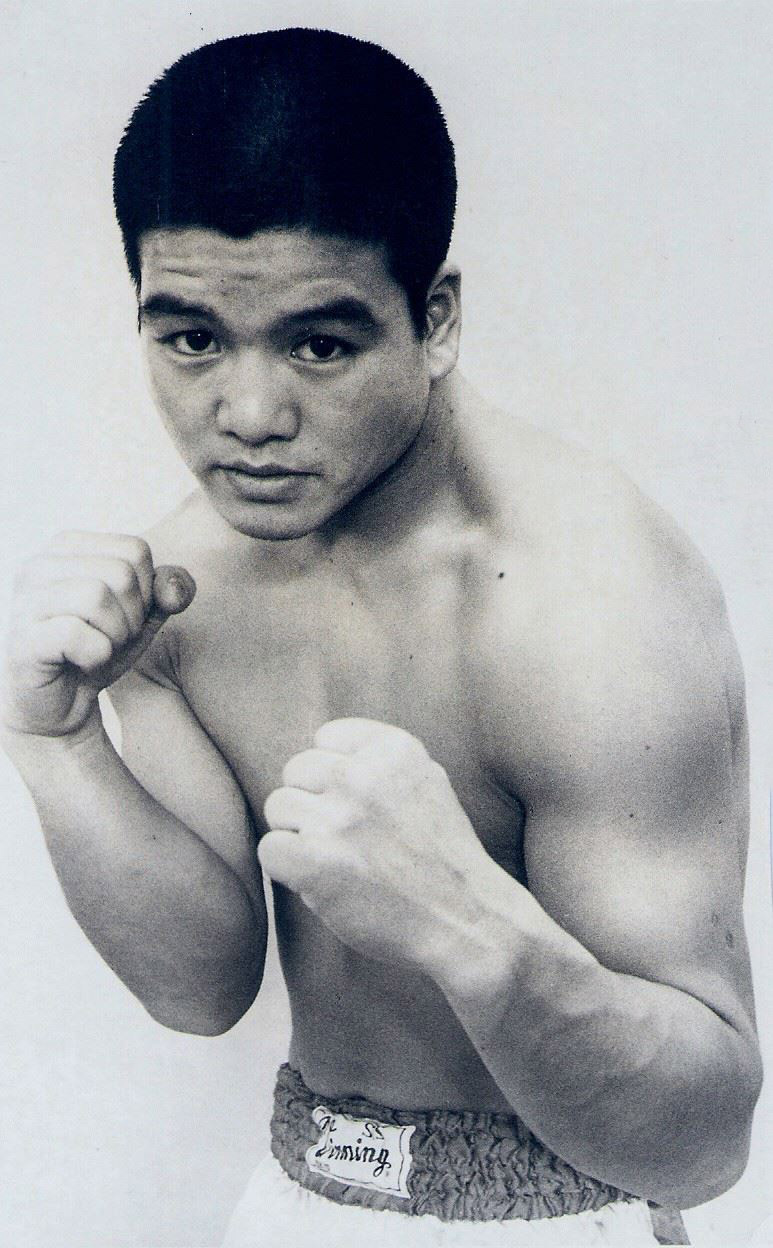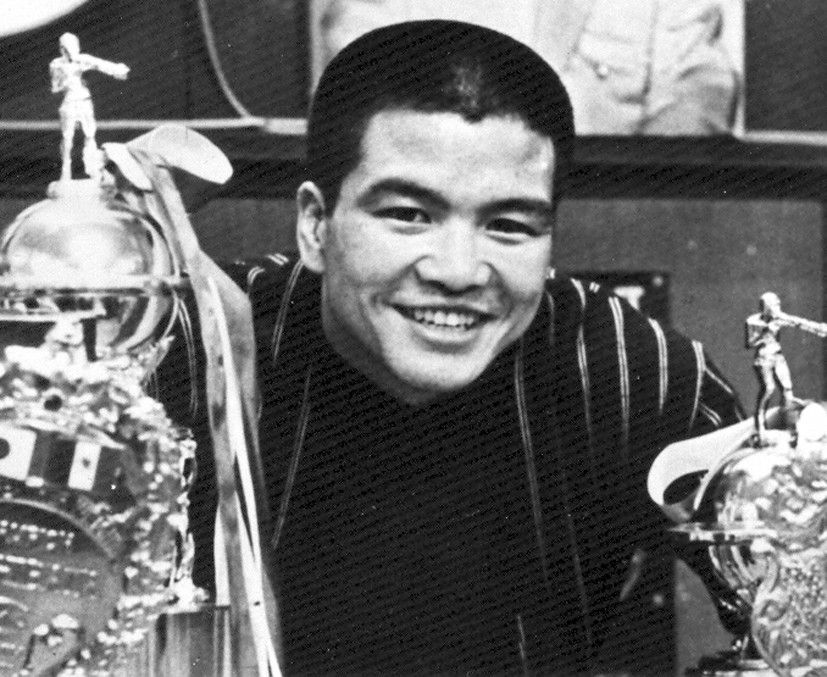Best I Faced: Kuniaki Shibata

THE TWO-DIVISION RING CHAMPION LOOKS BACK AT HIS TOUGHEST OPPONENTS
Kuniaki Shibata, the middle child of three, was born in Hitachi, Japan, on March 29, 1947. In the post-war years, his father was employed at a factory of Hitachi Ltd. while his mother looked after the family.
“I was never a troublemaker, a street brawler or anything,” Shibata told The Ring through Hank Hakoda. “Hitachi is rich in nature, with mountains and the sea. I was like a monkey child, climbing trees and jumping around in nature every day. That’s how I got the great core strength boxers need, and my moves had no wasted motion.”
The youngster got into boxing when he was 16 years old because of his idol, bantamweight contender Katsutoshi Aoki. He initially planned to join the same gym but ended up joining the Yonekura Gym, which was nearer to the milk store where he worked part-time.
Shibata didn’t have any amateur fights, but he had a natural aptitude for boxing and impressed his seniors.
“One week after my joining the gym, Mr. Yonekura told me to take a professional test,” he revealed. “I just did as Yonekura said and passed the test in a month. Yonekura let me live in his house and train with no fee. I focused on training every single day, dedicating my life to boxing.”
Shibata turned professional, aged 17, in March 1965. He gained invaluable early experience against bantamweight legend Eder Jofre, who came to Japan to face Fighting Harada.

(Photo: WBC Archives)
“I became Jofre’s sparring partner for ¥20,000 (about $55 at the time) per round, which was incredibly high pay in those days,” he said. “I went for 10 rounds with Jofre both times he came to Japan. None of my punches landed on Jofre, not even a single punch. He only schooled me, never letting me in with his perfectly closed defense. I asked Jofre’s manager why I couldn’t hit him. He gave me candid advice: It was because I put a lot of pressure in my eyes when I hit him, so it was easy to predict.”
Shibata went on to win 21 consecutive fights before tasting defeat for the first time against Dwight Hawkins (KO 7). Soon afterward, Hawkins’ trainer, Eddie Townsend, became Shibata’s trainer.
After getting stopped by Hubert Kang (KO 6) in a shot at the OPBF 126-pound title, Shibata regained his form, winning eight out of his next nine fights. The lone blemish was a draw with Venezuelan important Jose Acosta (D 10).
Vicente Saldivar, the Ring/WBC champion at the time, craved a unification matchup with WBA titleholder Shozo Saijo. However, Saijo’s manager was able to broker a deal which meant Saldivar first had to defeat Shibata. Due to smart negotiations on his behalf, Shibata was able to earn $10,000, which was double to usual challenger’s rate.
The Japanese fighter flew 13 hours to Los Angeles and then drove three hours to Tijuana a month before the fight to acclimatize and shed 10 kg. They met in December 1970.
“All the media believed Saldivar was going to finish me in the early rounds,” recalled Shibata. “Tijuana was a poor city at that time, where everyone gambled in the casinos. That environment unexpectedly worked to my great advantage. You had to pay to watch Saldivar’s training, while mine was free. (laughs) A bunch of guys came to watch me. I became friends with those who were interested in me. They asked me frankly, ‘Shibata, you fight for 15 rounds?’ They were talking about betting on the premise that I would lose and that they would make money as long as I made it to the decision.
“Then I came up with an idea. I borrowed $100 from Mr. Yonekura to bet on myself to win by a 15-round decision. My word spread quickly and created buzz amongst gamblers. More and more people came to me, even Saldivar’s trainer. Eventually, opposition supporters began to provide me with valuable information about Saldivar’s training and strategy. To my surprise, before that event, not only the gamblers but even the entire hotel where I was staying had already become my fans. Mexico wasn’t hostile territory for me. I felt like I would fight in my hometown.”
It proved to be a big help, as Shibata fought the fight of his life and the defending champion retired at the end of 12 rounds.
“I learned from Saldivar the dignity of a champion, of honoring your opponent at the beginning and at the end.”
“I fought a lot of Mexicans, but Saldivar was absolutely on a totally different level in everything,” he said humbly. “I learned from Saldivar the dignity of a champion, of honoring your opponent at the beginning and at the end. He raised my hand even though he lost before his fans.”
The unexpected title win meant there was no planned celebration in Mexico. However, it was big news at home.
“Due to the cancellation of the satellite broadcast to Japan, the extra edition of a newspaper, featuring only my victory, was issued and distributed in the middle of Tokyo for free,” he said proudly.
Saldivar vs. Shibata, Part 1 (more at takeo521 on YouTube):
“I wanted to travel for a while and then return to Tokyo, but due to so many offers from TV shows, I had to leave for Tokyo immediately. My arrival at Tokyo airport was unreal considering my quiet departure. I realized it was a life-altering victory. I had flown economy and flew back as a champion upgraded to first class. On my arrival in Tokyo, I realized the whole country was literally buzzing about my accomplishment. It lasted for a month.”
After the stunning win, there was talk of an all-Japanese unification with Saijo. Those talks were curtailed when Saijo was beaten by Antonio Gomez.
Shibata went on to make two defenses, impressively beating respected Mexican Raul Cruz (KO 1) before struggling with future titleholder Ernesto Marcel (D 15).
“I thought I lost the fight, honestly,” said Shibata, who earned a career-high $100,000. “The referee saved me, deducting points from him twice. He was tall and hit me a lot. My face was swollen bad for the first time. The only good thing was he was not a big puncher.”
Shibata’s first-round knockout of Raul Cruz (via BoxingJournals on YouTube):
The championship tenure came to an abrupt end against Clemente Sanchez in May 1972.
“I screwed up big time,” admitted Shibata, who was knocked out in the third round. “In advance of the showdown, everyone told me I would have to be attentive to his strong left hook only, but I got caught with his straight right hand. I still remember my legs went numb. I could hear the corner telling me to get up. I attempted to beat the count, but that did not happen and my legs totally betrayed me. It was a costly lesson, that I should take what people said with a grain of salt.”
The loss prompted a move up to junior lightweight, but it wasn’t a smooth transition; he had to shake of a contentious defeat in South Africa before using his skills to out-hustle Ring/WBA champion Ben Villaflor (UD 15) in Honolulu, Hawaii, in March 1973.
via Pinoynation Boxing Channel on YouTube:
After one title defense, Shibata returned to Hawaii in December 1973 for the rematch with Villaflor.
“Knowing Villaflor’s big right punch was the most dangerous, I dodged it as planned, BUT I took a decisive left that I was not ready for at all,” Shibata admitted. “I suffered a first-round knockout. In the post-bout interview, I said, ‘I apologize today to everyone in Japan, but I will definitely come back stronger.'”
And to his credit, he did, despite calls from Japanese media outlets for him to retire. Shibata’s team was able to bring WBC titlist Ricardo Arredondo to Japan to face their fighter just four months later.
“Arredondo was a crafty technician unlike other warlike Mexicans I faced,” he said. “He always stepped back and fought, but he was doing that move with his upper body only, so it was a good home for my left hook. Although he had neither remarkable speed nor power, he still was able to floor his opponents, thanks to that unusual timing.
via Box Japan on YouTube:
“Driven by my regretful loss to Villaflor, I scored a satisfying win over a difficult champ. Without [trainer] Eddie [Townsend’s] unconditional support on a one-to-one basis, I would never ever have become a three-time titleholder. He was a magical motivator, and I felt very good coming into the fight, unlike the rematch with Villaflor. This win was really a gift to the fans. We celebrated as usual, but to be honest, I was more relieved than excited. I had to be a man of my word.”
During his second reign as 130-pound champion, Shibata would make three successful defenses. His celebrity was such that ahead of the second defense against Ramiro Bolanos (KO 15), he got married on national TV and former prime minister Eisaku Sato was a witness.
Shibata surprisingly lost his title to then-unheralded Alfredo Escalera in July 1975.

(Photo: WBC Archives)
“I couldn’t show my best form, partially because I was still recovering from a cold,” he explained. “The major contributing factor was I was unable to see and react Escalera’s big swinging punches at all. I could not stand up when he knocked me to the canvas by the unrecognized punch. It was not only due to my poor condition, but the natural progression of age was setting in.”
Although Shibata knew the end was near, he fought three more times before retiring with a record of 47-6-3 (25 knockouts).
Since then, Shibata has worked as a commentator and trainer, and after he got his professional golf license, he regularly appeared on Golf TV. He also did many TV commercials.
Shibata, now 76, is married and has three children and four grandchildren. His home is in Lake Yamanaka, in the Yamanashi Prefecture, but he spends most of his time in Tokyo where he works.
He graciously took time to speak to The Ring about the best he fought in 10 key categories.
BEST JAB
Ernesto Marcel: “Ernesto Marcel knew how to use the jab the most. He delivered really fast and sneaky jabs, although my swollen eyes might have made it look better than it was. Victor Federico Echegaray was also a good jabber, but he lacked threatening power.”
BEST DEFENSE
Vicente Saldivar: “Tough decision between Vicente Saldivar and Ben Villaflor. If I had to pick one, it would be Saldivar. They both had great capabilities to counter, supported by their good defense.”
BEST HANDSPEED
Saldivar: “Vicente Saldivar is the first that comes into my mind, followed closely by Ben Villaflor. These two fighters were by far the top two of my opponents. Both of them had amazing handspeed.”
BEST FOOTWORK
Marcel: “Very difficult to choose either Ernesto Marcel or Victor Federico Echegaray. If anything, I would give it to Marcel, who showcased quick and busy moves. Marcel was pretty fast on his feet, probably because he used to play basketball. I was in trouble with my eyes shut and missed a lot of my shots, while he successfully hit me and circled, staying on the outside and didn’t engage much.”
SMARTEST
Ramiro Bolanos: “After his knockdown in the second round, he spent the following two rounds regaining his footing to fight back with an even better performance in the fifth and sixth rounds. My second choice is Ricardo Arredondo, who confused me with his awkward timing.”
STRONGEST
Bolanos: “He demonstrated his durability to everyone who witnessed the fight against me. Other candidates I can think of are Vicente Saldivar and Alfredo Escalera, but yes, I am sure Bolanos had the strongest body.”
Shibata vs. Bolanos (via Mario Sanchez on YouTube):
BIGGEST PUNCHER
Ben Villaflor: “The two most dangerous punchers I’ve ever faced were Saldivar’s straight left and Villaflor’s right hook. Saldivar threw the sharpest punches, while Villaflor threw the heaviest. Punching power between featherweight and junior lightweight was totally different. Therefore, my conclusion is Ben Villaflor. Ramiro Bolanos was also a hard-hitter that I have to mention.”
BEST CHIN
Bolanos: “I was almost knocked him out cold with a barrage of damaging shots in the second round. However, I literally had to keep hitting him hard until the referee waved off the contest in the 15th round. My hands got terribly swollen due to his incredibly durable chin.”
BEST BOXING SKILLS
Ricardo Arredondo: “Among many great opponents, Ricardo Arredondo was the fighter who took advantage of his boxing skills the most. He had the ability of fighting at his own distance and rhythm. He knew how to utilize his natural supple body to make it happen. Other competitors are Alfredo Escalera, who showcased an elusive and instinctive style; Ernesto Marcel, who displayed quick in-and-out bodywork; and Ramiro Bolanos, who proved overall high ability. And not to mention Vicente Saldivar, whom all my credit must go to.”
BEST OVERALL
Saldivar: “Vicente Saldivar was the best all-rounder I faced. My two greatest opponents, Vicente Saldivar and Ben Villaflor, were superb and unparalleled by any other fighters I faced. I’d like to emphasize that Ramiro Bolanos was also an impressive fighter.”
Our correspondent Hank Hakoda coordinated and translated this feature.
Questions and/or comments can be sent to Anson at [email protected].














